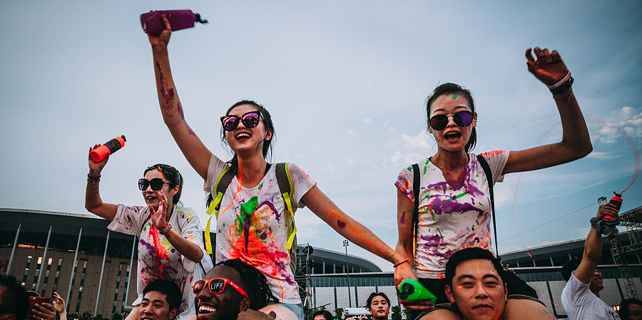Coloring culture
 |
|
Chinese artist Bai Ming's ongoing exhibition in Lisbon showcases nearly 200 ceramic works, including vases, paintings and large bowls. [Photo provided to China Daily] |
Pedro Gadanho, director of the Museum of Art, Architecture and Technology, says Bai "expands the tradition of Chinese porcelain as one of the most powerful artistic expressions from a country with a millenary culture".
The exhibition is being held in a 300-square-meter hall at the MAAT through Sept 4. It's part of the program of Sino-Portuguese Cooperation and Cultural Exchange under the Belt and Road Initiative.
Rosa Goy, a curator of the MAAT, says the exhibition's title refers not only to the two colors of qinghua porcelain but also the white limestone buildings and the blue sea that form an ever-changing, dreamlike scene of Lisbon.
Explaining why the exhibition name has "white and blue" though qinghua refers to blue and white, he says this is to show the works are updated versions of an old format.
The artist also says that Bai, his surname, means white in Chinese.
But Bai's works do not have intricate patterns and auspicious motifs that are commonly seen on antique ware. Instead, he draws simple, smooth lines in cobalt blue, reflecting the natural spirit and elegant beauty of classic Chinese art, says Fan Di'an, the Chinese curator of Bai's exhibition and head of Beijing's Central Academy of Fine Arts.
The exhibition also demonstrates Bai's attempts to diversify. His Between Porcelain and Stone series models porcelain objects after the Taihu rock, a kind of porous limestone used to decorate classic Chinese gardens.
In Zen and Apparatus, the clay is stretched and shaped into small sculptures.









